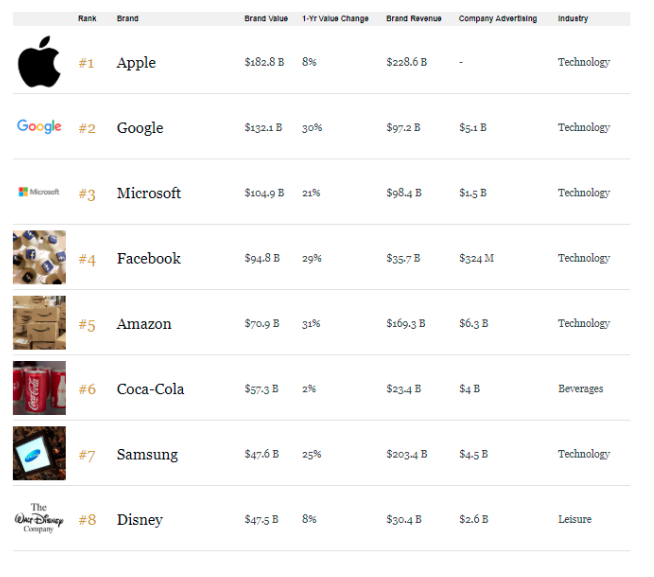In early 1995, two Stanford grad students started working on a new way to index web pages. This “search engine” used a proprietary algorithm to map out all links that come into and going out of a web page. Internally, they called this search engine “BackRub”.
By 1996, BackRub had grown too big for Stanford University servers. The two students had a choice — they could either sell off the algorithm, or they could turn it into a business.
Fortunately for the internet, they took the latter option. And the first thing they did was to change the name and since then “BackRub” become “Google” instead of “googol”.
And, you know how the rest of the story unfolds.
What’s in a Store Name?
Can you think of saying “why don’t you BackRub it?”
Probably not.
Google’s name had a not insignificant hand in the search engine’s success. It’s short, quirky, pronounceable, memorable, and easy to write. Unlike its competitors at that time — Lycos, AltaVista, etc. — it can also be turned into a verb. For a company that sells an activity (searching), that’s a big plus.
(Imagine saying “just Lycos it” — doesn’t quite roll off the tongue, right?)
As several studies have shown, brand names have a marked effect on how customers perceive your business:
- A study by the University of Miami and California Polytechnic Institute discovered that store name and quality of merchandise are the two major contributors to a store’s brand image.
- One study concluded that brand names of products sold in a store had no impact on consumers’ risk-perception while shopping. However, consumers perceived greater risk if the store’s own brand image was weak.
This is why Sean Parker advised Mark Zuckerberg to “drop the ‘The’” from Facebook; your name is far more important than you realize.
How to Give Name to Your Online Store: 4 Principles of Brand Names
We’ve had enough of theory. Let’s now take a look at how to actually choose a brand name that works
Simplify whenever possible
Here is the list of the world’s most valuable brands from Forbes:

Almost all the top brands in the world have one identical characteristic: they are simple and easy to pronounce. They are either between 1-4 syllables long or usually used in abbreviated form (such as IBM or GE for General Electric).
Simplifying your brand name has two benefits:
- Short, pronounceable brand names are easy to remember.
- Simpler names are easier to translate across languages — a crucial requirement for ecommerce businesses.
How can you pick a catchy name for a business? Follow these guidelines:
- Limit yourself to 2-3 syllables per word
- Keep the name short — preferably one word, at most two words.
- Limit the use of silent letters. Use phonetic words as much as possible. Studies show that this can also make your brand name easier to translate.
- Drop unnecessary suffixes/prefixes such as “the”
Ask your target customers
Coco Pops, a well-known Kellogg’s cereal brand in the UK, changed its name to “Choco Krispies” in 1998. The impact of the name change was immediate and disastrous: sales declined within weeks and market share dipped to an all-time low.
In an attempt to haul sales back up, Kellogg’s ran a telephone poll where it asked children to choose from a handful of names, including the original one. Nearly 90% of respondents chose the original name.
With this data, Kellogg’s pulled the trigger and switched the name back to “Coco Pops” in 1999. Sales shot up by 20% and the cereal continues to be sold under the original name today.
While you might have strong feelings or passions about your store name, your customers might not always feel the same way.
Fortunately, it’s easier than ever to run an opinion poll asking customers what they want. Here’s a three-step process to do this:
- Use Typeform to create a simple customer survey. Alternatively, use >oLark or Qualaroo to poll visitors dropping on your site.
- Send this survey to all friends, family, and acquaintances on your social networks. Some networks, like Facebook and LinkedIn, also allow you to poll your friends/followers directly on the site itself.
- For an opinion from your target market, run a Facebook ad campaign directing users to the customer survey.
Use descriptive adjectives that mirror what customers value
Here is a simple three-step process for coming up with business names ideas:
- Step 1: List your product’s intrinsic quality cues. Say, if you’re selling cookies, these might be the softer texture, superior ingredients, etc. Use these as a springboard for naming ideas.
- Step 2: List your target customer personas and what they value. For your cookie company, do they value external factors such as price, or are they more concerned with the texture, taste and ingredient quality?
- Step 3: Find qualities that overlap in both the above lists. Use them in your brand name. For example, if your customers value freshly baked cookies that are easy on the wallet, you could use a name like FreshBakes.
Make sure that the name is available
Lastly, before you select a name, make sure that the equivalent domain is available in a popular extension.
Unless you’re specifically targeting a local country market outside the US, your extension choice should have this priority:
- .com
- .co/.net
- .org
- .io (only for tech focused brands)
- Country TLD (such as .de, .co.uk, .pl, .ru, etc.)
- .me, .info, .tv
In 99 out of 100 cases, you won’t go wrong with .com, so try to get the name in this extension first.
Conclusion
Branding theory is vast and complicated, but for coming up with business names ideas, all you need to do is understand your product’s intrinsic and extrinsic qualities, and what your target customers value. This will help you choose a short, pronounceable, memorable name that will let you stand out from the competition.







